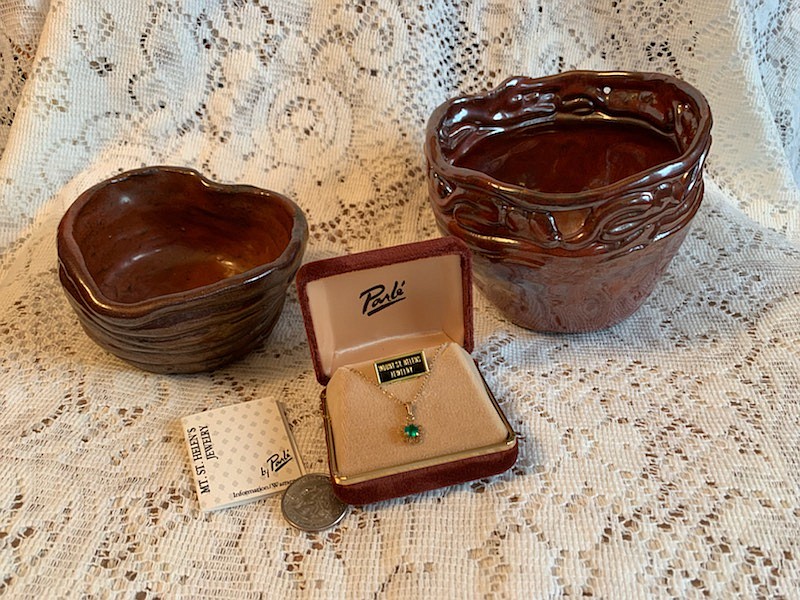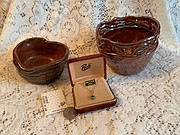Remembering Mt. St. Helens 40 years later
John Goedde was at home in Coeur d’Alene on May 18, 1980, when everything went dark.
“Our house was four stories,” he recalled, “a split level. I remember, we were two floors down, because that’s where the TV was. We were watching television, and we knew it was coming. We just didn’t know when. Then, everything turned really, really dark.”
Goedde said going out into the world was a surreal experience, one he was able to luckily share with strangers on the other side of the country.
“I remember cleaning up around the office I was working in at the time,” Goedde said. “I was cleaning up the parking lot outside the office. We had about 2 inches of ash. What’s funny was, I was going to Hartford, Conn., right after it happened to an insurance school. I remember taking a bunch of pill boxes; I bottled up a bunch of Mt. St. Helens ash and took it with me to Hartford. I ended up giving it to a bunch of people there.”
Goedde said, not unlike the coronavirus crisis today, the effects of the eruption linger on.
“Initially, it was pretty destructive,” he said. “It was hard on equipment. Even driving your car, you had to watch to make sure your air filter didn’t [clog]. But the ash also had a fertilizing effect; it was great for gardens, and I have no idea why.”
•••
Keva Wolfe is a proud fourth-generation North Idahoan. But on May 19, 1980, she was worried about the fifth generation.
“I was in labor with my first child at Kootenai Medical Center,” the Post Falls resident remembered. “No one was allowed to be in the hospital with me.”
Wolfe said she was only 18 years old and scared when Mount St. Helens blew. While she’s 40 years older today, she still has world-changing events on her mind.
“Just like today with COVID,” she said, “I went through labor and delivery with my first child alone. No husband or immediate family.”
•••
Coeur d’Alene’s Kiki Miller remembers all too well May 18, 1980.
“I was at a horse show in Spokane,” she recalled. “It got dark, and then we watched ash pile up on the backs of the horses. I was very afraid my horse would become sick.”
The city council member was, at the time, a district manager at the Coeur d’Alene Press, tasked with delivering newspapers to afternoon carriers.
“We made handkerchief face coverings with the phrase ‘Cd’A Press carriers deliver through rain, sleet, snow and volcanic ash.’ [Carriers] were given the choice to not do their routes. Only two kids didn’t deliver for one day.”
Miller couldn’t help but draw parallels from the natural emergency 40 years ago to the emergency facing the world today.
“I would hope the younger generation recognizes that the oldest before them survived many scary and dangerous times,” Miller reflected, “and by working together survived them. The younger generation will, too.”
•••
Martha Cook remembers the day Mt. St. Helens erupted.
“I remember the ash falling, I remember that very clearly,” Cook said. “We were given stay-at-home orders and nobody complained.”
She likened the experience to the current pandemic, as everyone was required to wear masks, schools closed, and all workers were ordered to stay home unless providing emergency services.
“Only one grocery store, Rosauers, remained open,” Cook said. “They ran out of milk, bread, and beer in six hours.”
At the time, Cook worked as a librarian at North Idaho College. The graduation ceremony was the day before the eruption. She remembers pausing at the staff and faculty party after the ceremony to take in the lush May evening.
The next day, when the ash began to fall, it felt as if that vibrant world had been swallowed by a blizzard. At 4 o’clock, Coeur d’Alene was dark.
When the first warnings came out, the city ordered people to spray the ash off their driveways and sidewalks. Later they were told to spray it off their lawns, then that it was good fertilizer, then that it could be dangerous to horses. People were scared and confused.
“None of us knew how long it would last,” Cook said.
When the skies began to clear, the ash stayed. Cook said that it can still be found under the duff of large trees in the forest. She keeps two iridescent red bowls in her living room, thrown by a ceramic student at NIC with ash from Mt. St. Helens.







